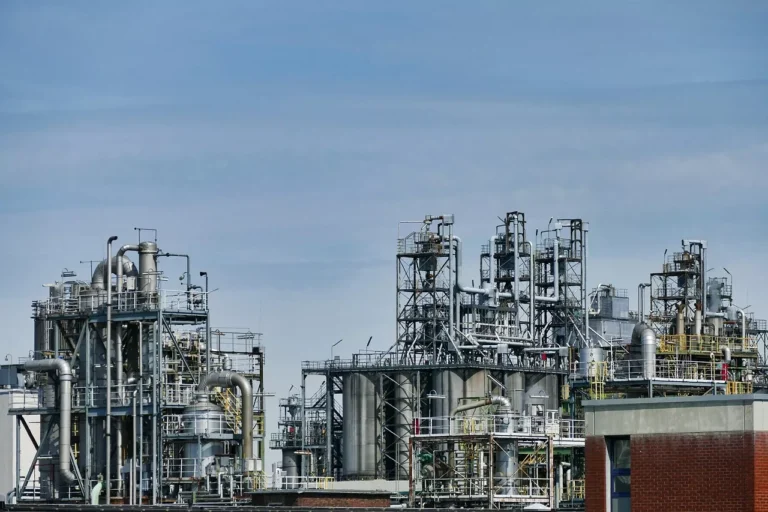
Glenfarne and PTT Sign Major Cooperation Agreement for Long-Term LNG Offtake from Alaska Project
In a move that significantly strengthens energy ties between the United States and Thailand, Glenfarne Alaska LNG, LLC announced the signing of a Cooperation Agreement with PTT Public Company Limited, Thailand’s largest publicly traded corporation and its national oil and gas enterprise. This strategic agreement lays the groundwork for a long-term partnership that includes the procurement of two million tonnes per annum (MTPA) of liquefied natural gas (LNG) over a 20-year period from the Alaska LNG project, a major development set to become a cornerstone of North American LNG exports to Asia.
The Alaska LNG project, held under 8 Star Alaska, LLC, is a joint venture between Glenfarne Group, LLC—through its subsidiary Glenfarne Alaska LNG, LLC—and the Alaska Gasline Development Corporation (AGDC). Glenfarne is the majority stakeholder and lead developer of the project. With this agreement, PTT is taking a significant step toward securing a long-term, stable, and competitively priced source of energy while reinforcing its broader national strategy to ensure energy security and sustainability in Thailand.
The signing ceremony of the Cooperation Agreement was attended and witnessed by prominent dignitaries, including Thailand’s Permanent Secretary of Energy, Dr. Prasert Sinsukprasert, and the U.S. Ambassador to Thailand, Robert Godec. Their presence highlighted the geopolitical and economic importance of this bilateral partnership, especially in the context of deepening Thai-American energy relations.
The Cooperation Agreement provides a formal framework for both parties to negotiate and finalize definitive agreements. These will outline the specific terms for PTT’s long-term offtake of LNG, as well as their potential participation in the Alaska LNG project’s development and investment phases.
Strategic Momentum for Alaska LNG
“Glenfarne and Alaska LNG are pleased that PTT and the Thai government have realized the strategic security, cost, and stability advantages offered by the Alaska LNG project,” said Adam Prestidge, President of Glenfarne Alaska LNG, LLC. “With today’s agreement and previously announced agreements, Alaska LNG has now reserved 50 percent of its available third-party LNG offtake capacity to investment-grade counterparties, and the project has overwhelming interest from additional counterparties globally.”
This agreement with PTT marks a significant milestone in Glenfarne’s efforts to de-risk and commercialize the Alaska LNG project, which is envisioned as a game-changing North American export terminal that offers Asian buyers direct access to competitively priced U.S. gas without the uncertainties associated with the Panama Canal or politically sensitive regions.
Alaska LNG’s value proposition is multifaceted. The project’s economic fundamentals—backed by its location advantage, lower shipping costs to Asia, and regulatory readiness—mean it can deliver LNG to Asian markets at prices lower than those tied to Henry Hub gas shipped from the U.S. Gulf Coast. Moreover, with full federal permitting already secured, robust local and national political support, and a project configuration designed for energy security and resilience, Alaska LNG presents an attractive option for buyers looking for long-term price and supply stability.
Reinforcing Energy Security in an Uncertain World
Recent global developments, particularly geopolitical instability in energy-producing regions such as the Middle East, have underscored the critical need for secure, diversified sources of energy. The Alaska LNG project, by virtue of its location within the U.S. and direct shipping access to Asia without needing to pass through contested international waters, addresses this need head-on.
“Recent events in the Middle East once again underscore the significant need for Alaska LNG that comes from a secure, stable, and abundant source without traversing through potentially contested waters,” said Brendan Duval, CEO and Founder of Glenfarne Group, LLC. “This agreement with PTT further symbolizes Alaska LNG’s tremendous momentum, well on its way to becoming a reality that will solve Alaska’s natural gas shortage while providing jobs, business opportunities, and increased economic development for Alaska residents, businesses, and military facilities.”
Project Scope and Execution Strategy
The Alaska LNG project includes a massive infrastructure plan centered around an 807-mile, 42-inch natural gas pipeline. This pipeline is designed to transport gas from the North Slope—Alaska’s prolific hydrocarbon basin—down to the south-central coast for processing and export. The pipeline has a dual purpose: supplying domestic gas needs within Alaska and feeding the full capacity of the 20 MTPA LNG export terminal to be constructed at Nikiski, on the Kenai Peninsula.
In an innovative and financially sound approach to project execution, the development has been split into two distinct yet integrated phases. Phase One involves constructing the majority of the pipeline—roughly 765 miles—to deliver natural gas from the North Slope to the Anchorage region. This phase will satisfy local energy demands and lay the groundwork for Phase Two, which entails adding compression equipment and a 42-mile segment under Cook Inlet to complete the pipeline to the LNG export facility.
By separating the project into two phases, Glenfarne is positioning itself to unlock near-term value for Alaskan consumers while aligning capital deployment with progress on the export terminal. Construction of the export terminal will proceed in parallel with Phase Two of the pipeline to maximize efficiency and accelerate timelines for commercial operations.
Advancing Toward Final Investment Decision
Glenfarne is currently engaged with leading global pipeline contractors and engineering partners to finalize detailed plans and cost structures for the project. Notably, the company is partnering with Worley, a global engineering and project delivery firm, to complete the final engineering required to reach a Final Investment Decision (FID) for the domestic pipeline segment.
At the same time, Glenfarne continues to engage a wide range of potential strategic partners for the broader Alaska LNG development. These discussions cover a spectrum of collaboration areas, including equipment and material supply, engineering services, construction support, investment opportunities, and long-term LNG offtake agreements like the one signed with PTT.
Glenfarne’s Expanding LNG Portfolio
The Alaska LNG project is one of several major energy infrastructure initiatives being advanced by Glenfarne Group, LLC, a global energy infrastructure firm with a growing footprint in LNG production and import. The company owns Texas LNG, a 4 MTPA export facility under development in Brownsville, Texas, which recently announced that its full capacity is sold out. A final investment decision for Texas LNG is expected later this year.
Glenfarne is also the developer of Magnolia LNG, a late-stage LNG export project located in Lake Charles, Louisiana, adding to the firm’s growing LNG export portfolio. In addition to its U.S. assets, Glenfarne operates the largest LNG import terminal in Colombia and maintains a diversified energy infrastructure portfolio with more than 60 operating assets spread across five countries.
In total, Glenfarne’s LNG export portfolio—when including Alaska LNG, Texas LNG, and Magnolia LNG—represents 32.8 MTPA of permitted or near-permitted capacity under development. This makes Glenfarne one of the most significant emerging players in the global LNG industry.
A Shared Commitment to a Stable Energy Future
The Cooperation Agreement between Glenfarne and PTT reflects not only a significant business arrangement but also a broader alignment of strategic priorities. For Thailand, it secures a long-term source of clean energy that will support the country’s growing electricity and industrial demands while advancing its environmental and economic development goals. For the United States and Alaska, it means foreign investment, job creation, and the expansion of U.S. influence in global energy markets.










